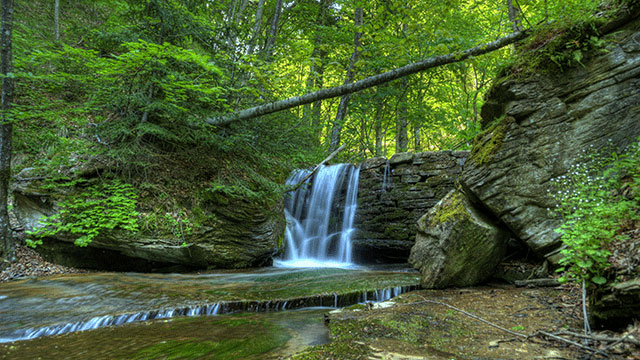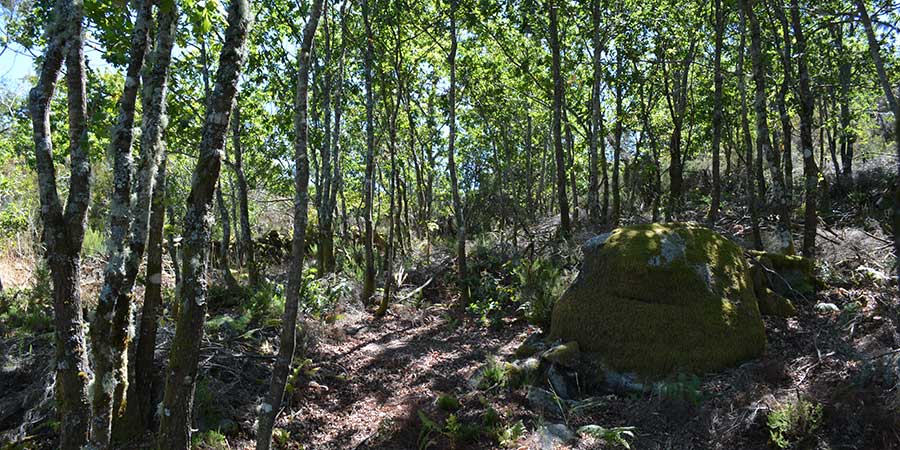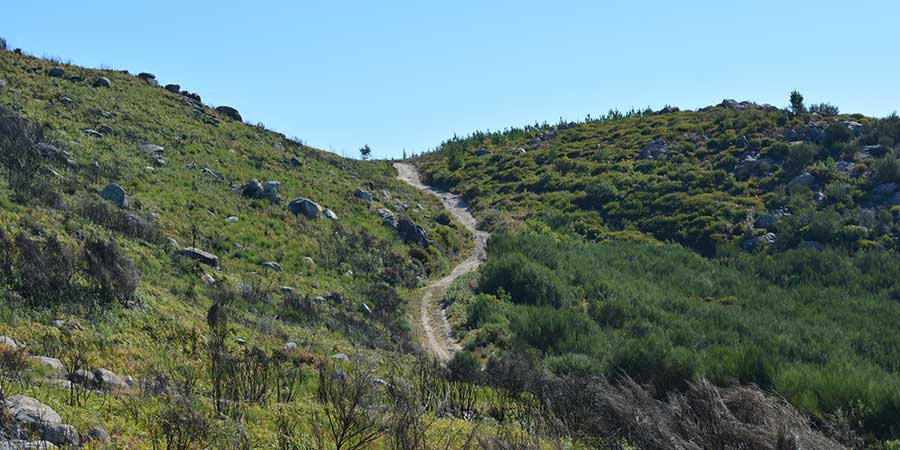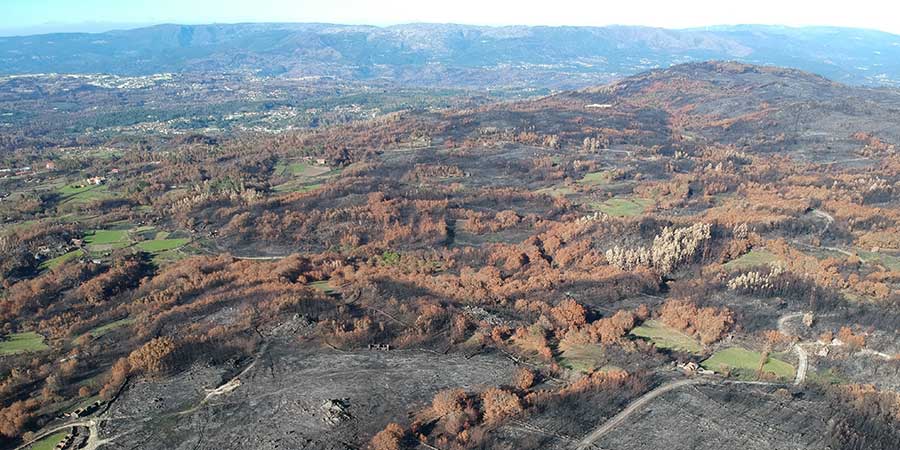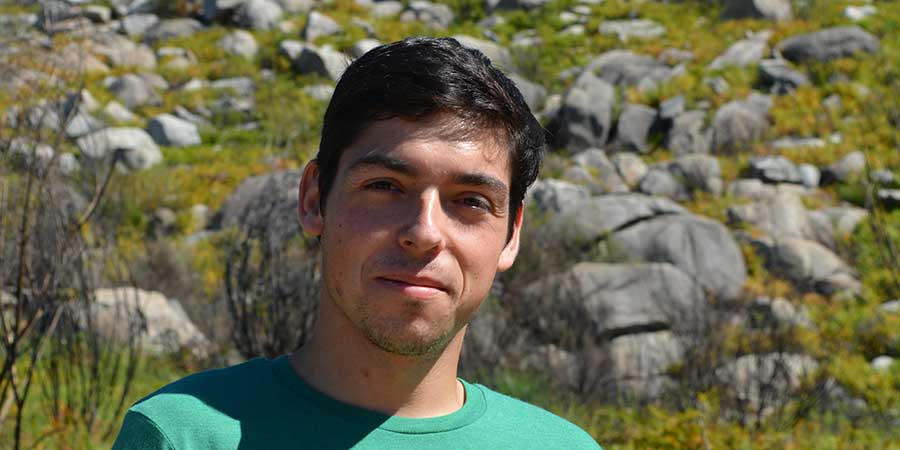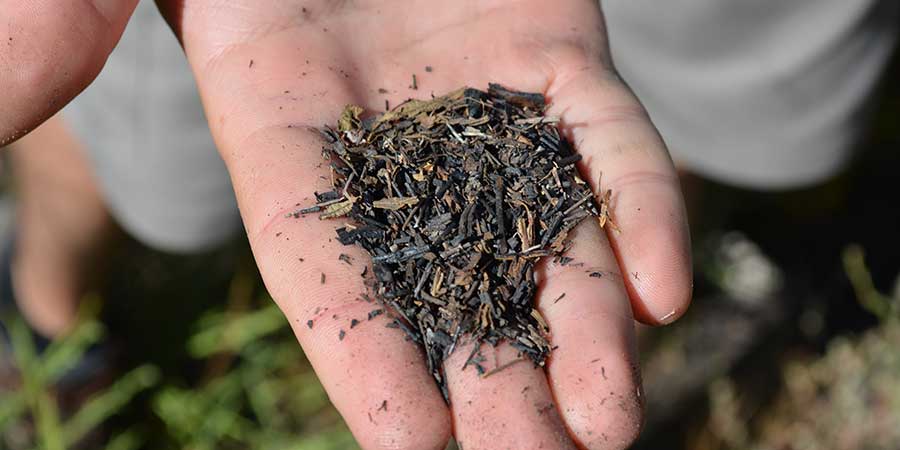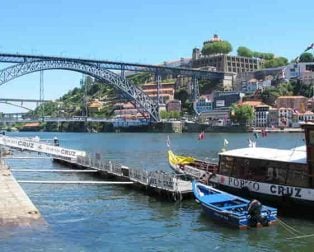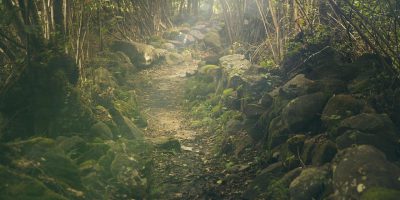Native oak woodland restoration project with CaminoWays
What should be a thriving oak woodland is a now a green desert.
Located in the northeast of Portugal, this woodland restoration project aims to develop sustainable land management practices to deal with the ravenous summer wildfires and regenerate native oak woodland.
The purpose of this project is dual, on the one hand, we will be establishing a carbon sink to help store co2 on the other hand we will be creating diverse forests with a stronger capacity to resist and recover from wildfire.
PLANT A TREE IN THE CAMINO FOREST
CAMINO FOREST UPDATE
Project Brief
A sea of combustible shrubs
The abandonment of farmland has allowed the Cytisus striatus (Portuguese Broom) to take a choke-hold on the mountainside.
In the summer this 3-metre high shrub dries up and becomes the perfect fuel for wildfires. In a land that deals with the reality of regular fires, this poses a very real threat to local populations. It also hinders the slow regeneration of the native fire-resistant oak woodlands.
The Outlook
This region naturally expects to have a wildfire every 8 – 12 years. The native oak trees are more resistant and will spring back to life within a few months. Slowly, through this process, the oaks would spread and in 100 – 150 years we would have the original woodland back. The problem is we cannot afford to wait so long. The current shrub vegetation burns intensely fast, which makes it impossible for firemen to manage. This means wildfires can quickly get out of control and kill people like they did in 2017.
Accelerating a natural process
In spring, together with the local firemen and our partner Montis we use controlled fire to reduce fuel availability for deadly summer wildfires. Besides improving safety this also clears the area allowing us to replant native oak trees and accelerate the forest regrowth process.
New Life: born from the ashes
Controlled fire burns at a low intensity and allows young oaks to survive. This means that within a few months they will spring back to life. If you look closely in this photo you will see the new oak shoots next to an old charred trunk. This happens because the root system survives the fire and then uses the extra nutrients to spring back to life. When they reach a certain age, this process goes even further, instead of having to start from the roots the tree will use the same trunk to grow new leaves and branches.
Immediate Impact
After the first controlled fire intervention a few immediate positive impacts are already visible. The ashes improve the nutrition of the soil (top-left and top right photos). The few young oaks which dotted the intervention area sprung back to life much faster than other plants (bottom left). Finally, an increase in young shoots and small flowers has led to an increase in rabbit populations and insect biodiversity.
The man on the ground
Luís Lopes is our man on the ground. He manages the day to day work at the mountainside and knows it like the back of his hand.
He loves showing people around and explaining the work and progress that Montis does on site.
The Vision
The photos show a 15-year-old oak forest. The shade manages the shrub overgrowth, fuel availability is lower, biodiversity in terms of flora and fauna is higher. Our lovely namesake moss makes a comeback! This is why we are planting our first 2000 trees here in the Autumn 2017, and why you should own a few.
For more information about the Mossy Earth woodland restoration project or any of the Camino de Santiago routes please contact our team.
